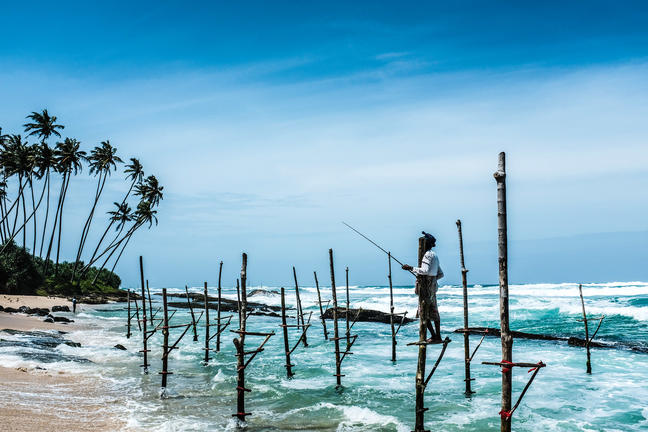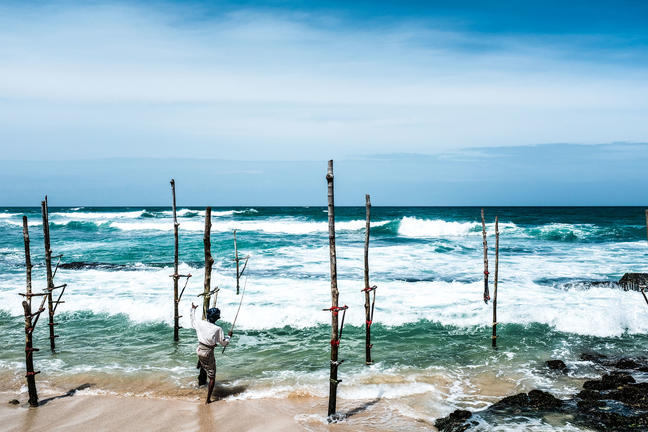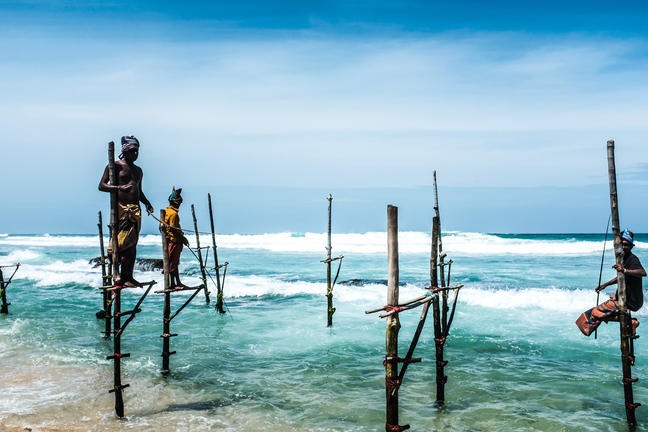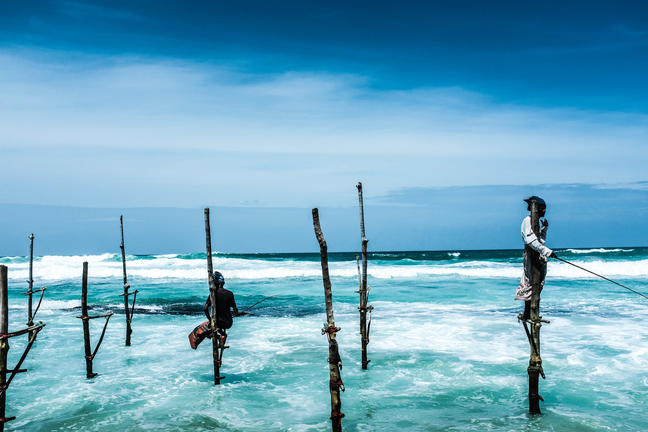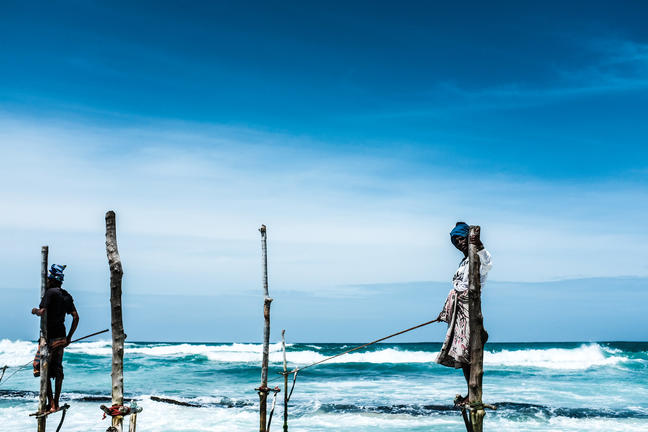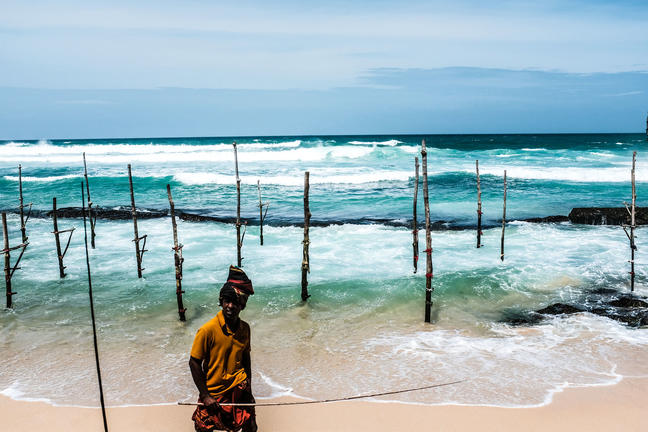The Weligama stilt fishermen are a unique and iconic sight in the coastal town of Weligama, located in the Southern Province of Sri Lanka. Stilt fishing is a traditional fishing method that involves fishermen perching on wooden stilts planted in the shallow waters along the shoreline. They balance themselves on these stilts and use a long pole to fish.
The practice of stilt fishing has been passed down through generations in this region, although its origins are unclear. It is believed to have been developed after World War II when fishing resources were scarce, and fishermen improvised this technique to continue their livelihoods.
The stilts used by the fishermen are typically made of strong branches or wooden poles that are planted firmly in the ocean floor. The fishermen balance themselves on the crossbar, which is usually positioned about a meter above the water. They hold a vertical pole in their hands and use it to hold a fishing line with a baited hook. The line is then lowered into the water, and the fishermen patiently wait for fish to bite.
Stilt fishing is a challenging and physically demanding practice that requires skill, patience, and balance. It is also a visually striking sight, as the fishermen create a unique silhouette against the backdrop of the ocean.
It's important to note that the popularity of stilt fishing in Weligama has increased significantly over the years due to tourism. However, the number of traditional stilt fishermen has declined, and many fishermen today practice it mainly for demonstration purposes, catering to tourists who are interested in witnessing this cultural spectacle.
While stilt fishing in Weligama is primarily a tourist attraction, it still provides insights into the traditional fishing practices and the local way of life in the area. Visitors can observe the fishermen in action, take photographs, and even try their hand at stilt fishing under the guidance of the experienced fishermen.
It's worth mentioning that stilt fishing in Weligama has faced challenges, including declining fish stocks and changes in fishing regulations. However, it continues to hold cultural and historical significance in the region, attracting visitors from around the world who are fascinated by this unique fishing tradition.
